Abstract 6/2012
Hubert Kołodziejski, Olgierd Wyszomirski
Management of security and safety in urban transport from the point of view of the public transport organizer
Safety and security issues in urban transport should be treated as a priority. The municipality and in particular the organizer acting on its behalf is responsible for ensuring safety. The concern for safety should be shared by all the entities involved in the preparation of the offered services. The urban transport areas of the highest real and potential risk of threats should be diagnosed. It is necessary to take into account to a large extent the psychological conditionings of the passengers’ evaluation of safety. Even an occurrence with a relatively low level of risk should be predicted and secured.
Safety and security management in urban transport ought to be based on the human factor, procedures and technology. Treating security and safety as an integral part of the process of servicing the passengers is not possible without its adequate management as well as direct servicing of the passengers by skilled staff. It is necessary to educate and regularly control if the staff is properly prepared to react to the events disturbing normal functioning of the urban public transport. The passengers should be provided with transport services in accordance to the planned standards. Infrastructure plays an important role in this process. Its proper functionality and esthetics make passengers feel more safe and secure.
The practical realization of such an approach is shown on the example of the Gdynia’s Urban Transport Board which is one of the organizers of urban public transport in the Gdansk Bay Metropolis.
Keywords: safety, security, public transport, organization, staff, procedures, technology
Wiesław Dźwigoń
Criterion of safety of passengers in the evaluation of transport hubs
In the opinion of passengers necessity to change is connected to longer duration of the journey and difficulties related to the change of the transport mean. Unfortunately direct connection between all important beginnings and destinations is not possible. Additionally, the importance of the change grows in times of rising mobility and transport intermodality. The aim of the article is to focus on safety in the transport hub. The importance of safety in the transport quality assessment has been presented as well. Two methods of multi-criteria assessment of the transport hubs with the special attention to the parameters influencing transport and personal safety have been discussed. Criteria of transport safety assessment, ranked in four groups: in relation to function, structure, execution-economy and legibility, have been widely presented. Parameterization of assessment of some criteria’s has been created on the basis of taking inventory dozen or so hubs of urban public transport. In addition weight to described criteria’s of assessment has been discussed. Evaluation of safety made in few transfer hubs allows formulating conclusions related to shaping this element of transport infrastructure. Shaping safety, comfort, time or other elements of the journey is happening simultaneously. Let’s remember: improving some parameters at the same time we are improving or making others worse.
Key words: public transport, transport hub, transport safety
Katarzyna Hebel, Marcin Wołek
Safety of passengers in public transport in the light of results of marketing research
Public transport is assessed by passengers and organizers on the daily basis. Differences in appraisal of different elements of transport services are determined by specific character of various cities and their transport systems. Specific element of transport service is the safety, that is psychophysical condition of passengers during their journeys in urban public transport. It includes all elements of transport, i.e. both: waiting at the stop and the transit itself.
The analysis of transport safety research carried out in selected European and Polish cities have been presented in the article. The results of researches conducted using this same methodology have been compared.
Results of researches entitle to state that safety of trolleybus transport in the European cities is valued as good or very good by 2/3 passengers and average opinion on safety of public transport in any Polish city has not exceed value: good.
Average appraisal of satisfaction of level of safety in urban public transport depends on experienced conditions while travelling in the city. Transport by buses and trolleybuses has the best opinion as far as the safety is concerned and the journey by urban train has the worst.
Quality gap referring to the safety of journey by public transport in specific cities is noticeable which means that level of passengers satisfaction does not coincide with their preferences as far as safety of journey is concerned.
Keywords: safety, public transport, marketing research
Marek Sitarz, Katarzyna Chruzik
Safety Management System of the public transport
Requirements, which are nowadays posed in front of the operators’ of public transport worldwide , are no longer limited only to assure the high quality of services. More and more often the leading criterion for transport companies running is transport safety. It results not only from a demand to live up to a standard performed by the local authorities responsible for transport , but also from the growing and more sensitive social awareness which after terrorist attacks gives priority to the safety and security. For several years, the most secure types of public transport i.e. air and railway transport are being run in accordance with the requirements introduced through the European directives – based on the Safety Management Systems (SMS), constructed and implemented in transport companies. These demands do not comprise however, the most frequent services of public transport based on the tramway and buses carriages. In the article the possibilities of adaptation of the solutions that are already applied in transport also in these most popular technical means of transport have been presented
Keywords: Safety Management System, public transport, process approach
Lidia Żakowska
Subjective safety of senior citizens in public transport
This paper presents the problems of safety perception of senior citizens in public transport in Poland and in the seven other European countries. The goal of this study was to evaluate the actual level of subjective safety and security of seniors using public transport means. Presented research results were selected from the effects of a large study conducted by the author in the framework of the EC project SIZE on “Life quality of senior citizens in relation to mobility conditions”. In the presented qualitative and quantitative studies of the SIZE project participated seniors and experts from eight European countries. The study was based on a heuristic methods, with the use of social science’ modern techniques, such as Focus Group Interviews and In-depth Individual Interviews. The qualitative study results were further elaborated as a base of the quantitative study, namely a large standard interview conducted in all participated countries on the two representative group of subjects, seniors and experts. The results received in all countries demonstrated a relative coherence of seniors’ and experts’ attitude toward mobility and safety of seniors in public transport. Many problems related to subjective safety of senior citizens using public transport, in relation to their social needs, to costs, to comfort and to the access of public transport means were disclosed. The proposed solutions to seniors mobility are in most cases connected to the safe and friendly infrastructure of public transport.
Keywords: safety, public transport, senior citizens, perception
Grzegorz Dyrkacz
Providing passengers’ safety as one the most important activities of the MPK S.A. in Cracow
Protection of security in public transport is a complicated challenge. Transport safety is related to the road traffic. Personal passengers’ as well as drivers and inspectors safety gains bigger importance. To this catalogue one should add property safety: vehicles, stops and other infrastructure elements. This article presents activities undertaken by the carrier in this scope. The basis is to employ competent staff who can manage in complicated road conditions occurring in a big city and in case of problems with passengers as well.
The second important area of activities is cooperation with institutions responsible for the safety in the city. Actions executed together with the Police and the City Guard (municipal police unit) have been presented in the article. Since in Cracow it is the carrier which is responsible for maintaining of the public transport stops infrastructure, the activities related to this task have been discussed in the article as well. Besides, selected statistics concerning victims of accidents, structure of inspections and cooperation with other institutions have been presented in short.
Keywords: safety, carrier, training for drivers, inspections
Łukasz Franek
Risk analysis in public transport
Article presents description of the measure estimating risk of accidents which may happen with participation of the public transport vehicles, with reference to different elements of infrastructure. It is proposed to observe dozen or so the most important infrastructure factors influencing users’ behavior and to estimate probabilities of occurring dangerous cases in relation to them. Municipal transport and road boards and operators may be interested in practical usage of results of this type of analysis since possibility to find out specific economical loses is important for them. The measure may be used in the decision process of the investment, modernization and operation stages. Approach to the risk management in close relation to the quality management has been taken from innovative methods used in industry.
Keywords: publictransport, safety, infrastructure, management, risk
Marek Bauer
The treat of pedestrian safety on non-signalised pedestrian crossings at the streets with bus lanes
The paper presents a rarely discussed problem of pedestrian safety at crossings without traffic lights at the one-way streets with separated bus lanes. This type crossings are is used relatively seldom, there is no studies about their effectiveness and safety. Meanwhile, they operate in Polish cities.
This article presents a set of factors influencing onto the reduction of visibility within the pedestrian crossings, which facilitate the dangerous events. Irregular and unsafe behaviours of pedestrians and drivers were defined. Then the specificity of two and three-lane streets with separated bus lanes consisting in was described. It results from the diversity of public and individual transport vehicles flows have been described. The paper presents an original methodology for testing pedestrians’ and vehicle drivers’ behaviours with taking into consideration definitions of behaviours and methods of measurements. The measurements results of the number and types of conflict situations at the five non-signalized crossings in Krakow Cracow were discussed. It was found that the number of unsafe behaviours requires a discussion how to improve pedestrians’ safety. But this improvement has to take into account that the traffic conditions of buses cannot be deteriorated. Finally, the recommendations for the analysed crossings were have been presented.
Keywords: pedestrian crossing, bus lane, unsafe behaviours
Zbigniew Ulman
Involvement of the Municipal Police in safety improvement in the Cracow public transport
The article presents problems with safety in the public transport from the point of view of the unit responsible for the protection of public order and peace. Characteristics of the rights of the municipal polices in the framework of road traffic as well as organization of the Cracow Municipal Police has been presented. First of all the scope of cooperation between the Cracow Municipal Police and the Municipal Transportation Company in Cracow (MPK S.A) undertaken in order to improvement of public order and transport safety in urban road transport has been discussed. The conclusions have been formulated based on the data from 2010 – 2011 coming from the internal data basis of the Cracow Municipal Police. The year of 2011 – the period of executing the Agreement concluded on the 29th December 2010 – has been submitted to the verification and more detailed evaluation, including analysis of types of public order violations and results of undertaken activities. Besides, necessity to shape new: adequate and effective measures in the framework of cooperation is underlined in the article.
Keywords: public transport, Municipal Police, safety

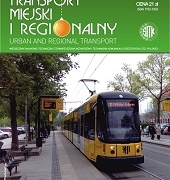
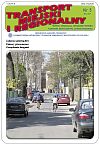 SITK RP
SITK RP 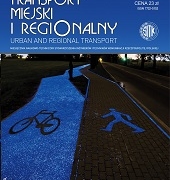
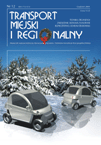 SITK RP
SITK RP 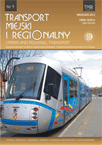 SITK RP
SITK RP 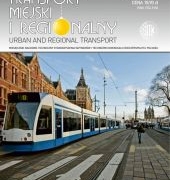 SITK RP
SITK RP 
 SITK RP
SITK RP SITK RP
SITK RP